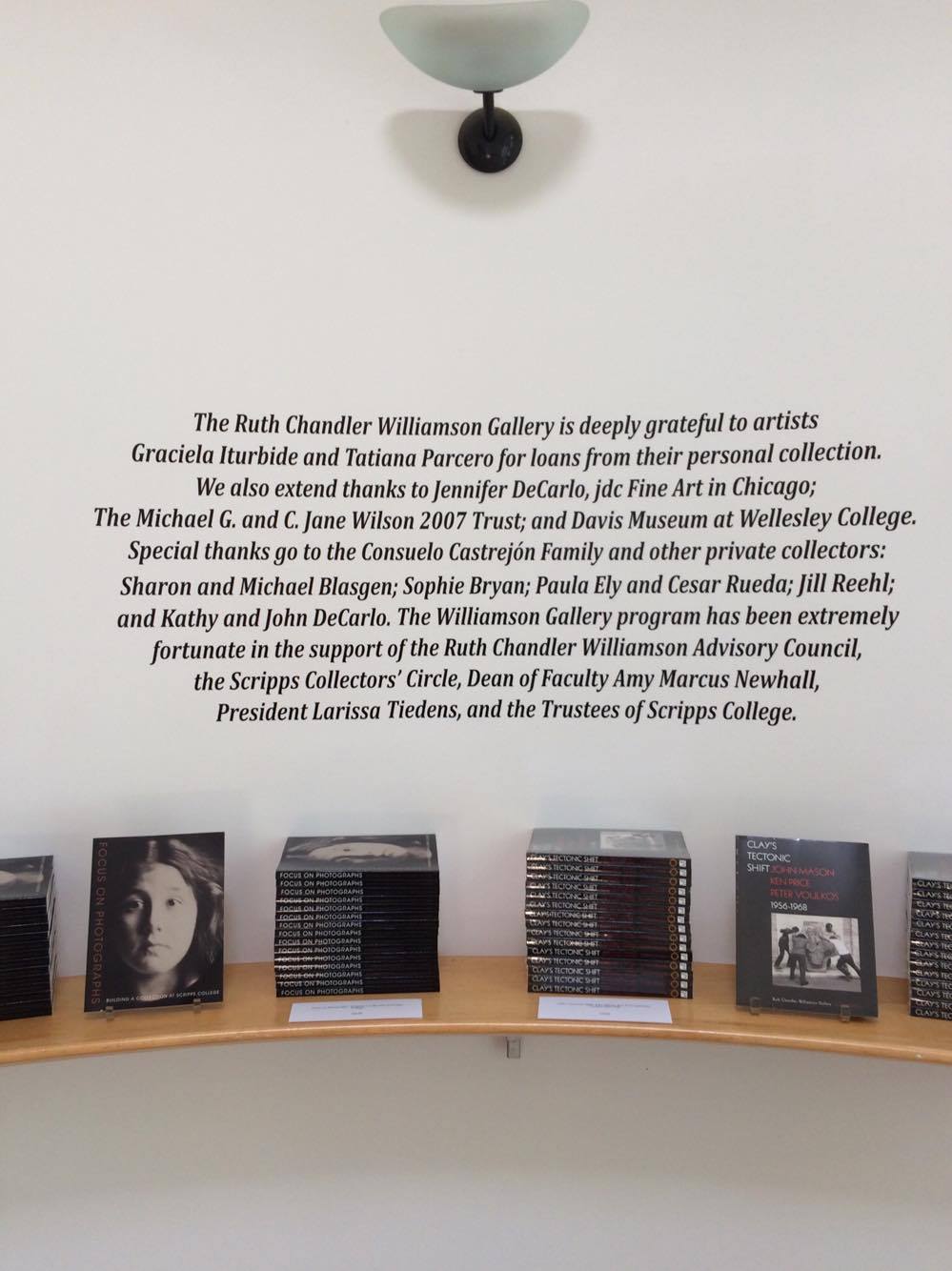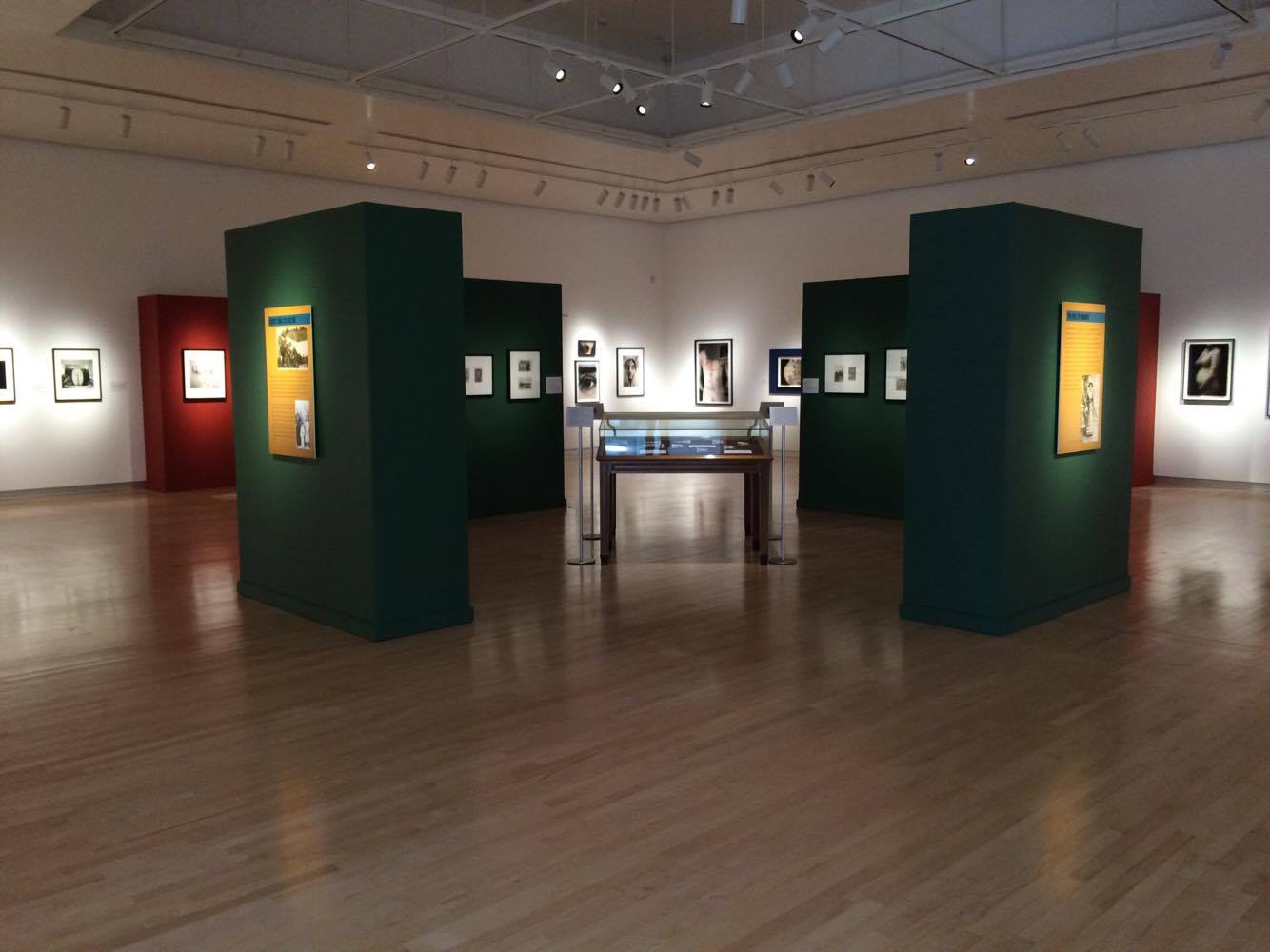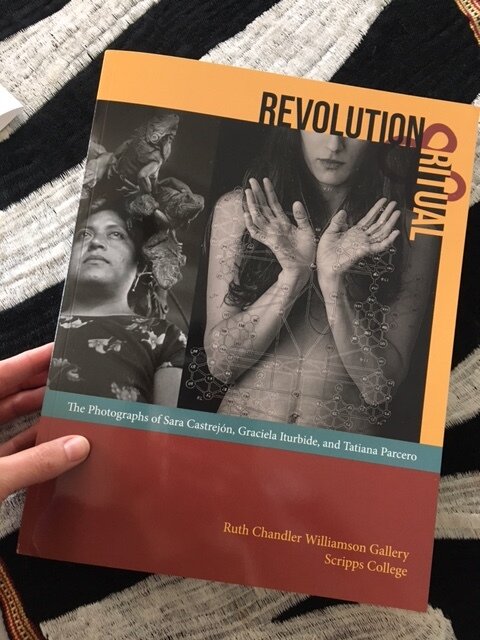Over time, she has expanded the scope of her investigations, using her face, her torso, her hands, even the souls of her feet, as the basis of "maps" on which to explore "concepts of identity, memory, territory and time . . . the relationship between man and Earth, between nature and the body." The images that she incorporates . . . are what she calls "visual metaphors" relating to some of the most pressing issues of our time: climate change, dwindling natural resources and migration.
Read moreVirtual View: Revolution & Ritual
Enjoy this virtual walkthrough of Revolution & Ritual at Scripp's College Ruth Chandler Williamson Gallery. The exhibition is part of the Getty Initiative Pacific Standard Time, and will be on view through January 7, 2018. An exhibition catalogue accompanied the exhibition, which juxtaposes and puts into dialogue three generations of female Mexican artists: Sara Castrejón, Graciela Iturbide and Tatiana Parcero.
Revolution and Ritual: The Photographs of Sara Castrejón, Graciela Iturbide and Tatiana Parcero
August 26 - January 7, 2018
We have been building up to this exhibition for the past few years, and encourage all patrons to view the exhibition, and attend free public events related to Revolution and Ritual: The Photographs of Sara Castrejón, Graciela Iturbide and Tatiana Parcero at Scripps College's Ruth Chandler Williamson Gallery. Event details follow. Jennifer DeCarlo, jdc Fine Art Director, will be in attendance; we hope to see you there.
Opening Day Events at Scripps College
September 9, 2017:
Panel Discussion with Catalog Writers
1:00 - 2:00 pm at the Humanities Auditorium
- Tea -
2:00 - 3:00 pm at the Margaret Fowler Garden
Opening Reception with Graciela Iturbide & Tatiana Parcero
7:00 - 9:00 pm at the Williamson Gallery
Tatiana Parcero to Exhibit in Getty Initiative "Pacific Standard Time"
This exhibition is part of the Getty Initiative, Pacific Standard Time LA/LA. Curated by Mary MacNaughton, this exhibition examines the work of three generations of Mexican women photographers and underlines how each artist explored and stretched notions of Mexican identity in works that range from the documentary to the poetic.
Read more












